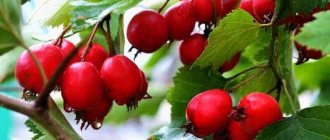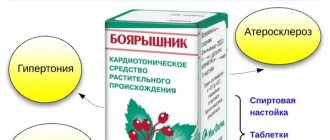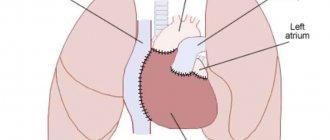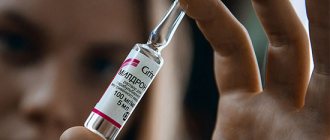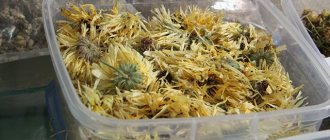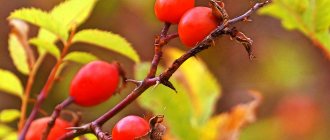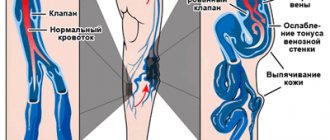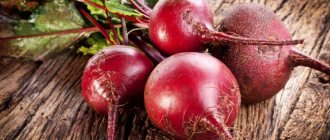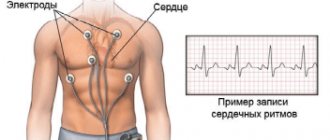Description
Hawthorn is a shrub or tree, up to 5 m high, from the Rosaceae family. Distributed in temperate latitudes of North America, Europe and Asia. The plant is very unpretentious and tolerates both frost and summer heat. Grows well both in the garden and in the forest. The shrub is extremely durable: it grows up to 400 years.
Hawthorn is grown for its medicinal properties and decorative properties. The shrub is multi-stemmed, with a dense crown, and holds its shape well. Hawthorn blooms profusely and produces many small bright red fruits. Against the background of green foliage, both berries and flowers look very decorative.
Since the 16th century, decoctions and infusions of the shrub's leaves have been used to treat dysentery and other forms of diarrhea. Later, the blood purifying properties of hawthorn became known. In the 20th century, the fruits, leaves and flowers of the plant were used to treat diseases of the heart and blood vessels.
Chemical composition
The composition of the fruits, shoots and flowers of hawthorn is very rich from the heart:
Vitexin – increases the elasticity of the walls of blood vessels. They expand, transport blood more actively, which facilitates the work of the heart and improves the blood supply to the organ;
hyperosiod – stimulates myocardial contractility. At the same time, the release of blood increases when the ventricles contract, that is, to maintain the same level of blood pressure, the heart beats slower. Hyperoziod stimulates the oxidation of glucose, which helps saturate cells with energy;
quercetin – affects blood circulation;
quercetrin – reduces the permeability of capillary walls and also acts as an antioxidant;
organic acids - the fruits and flowers of hawthorn contain both ordinary substances, such as citric or malic acid, and compounds that have a beneficial effect on the functioning of organs. Thus, caffeic acid stimulates the production of bile and suppresses the proliferation of pathological microflora. Ursolic acid provides the anti-inflammatory effect of hawthorn, chlorogenic acid normalizes the functioning of the kidneys and liver, oleanolic acid improves blood supply to the brain and heart;
vitamins - hawthorn for the heart is known as a record holder for the content of vitamin C. Decoction and tea from the berries improves immunity and significantly speeds up recovery from colds, sore throats, sore throats, and bronchitis. Also in the leaves and flowers there are vitamins A, E, K;
microelements - potassium, calcium, manganese, zinc and others. The most valuable component is iron.
The content of active substances in different parts of the plant is different. The fruits contain more organic acids and esters - for heart disease, drugs are prescribed mainly from berries. The fruit seeds contain astringents, which are used to treat diarrhea. For vascular pathologies, tea or a decoction of the leaves will be most useful, as they contain more vitexin. Flower tea has a general strengthening effect because it contains many flavonoids and acids.
Hawthorn root is used as a component of anti-aging products. It is rich in vitamins and polysaccharides.
Beneficial properties of hawthorn
The positive effect is largely based on the presence of a large number of useful components in its composition. Among them are especially distinguished:
- vitamin A;
- phytosterol;
- carotene;
- thiamine;
- routine;
- saponin;
- ascorbic acid;
- choline;
- malic and citric acids.
In addition, it contains a complex of vitamins and minerals. All this makes hawthorn preparations for arrhythmia simply irreplaceable. They help normalize the functioning of the entire body. The main qualities of its use for heart diseases are:
- heart rhythm is regulated;
- sleep is normalized;
- the activity of the heart is regulated;
- the work of this body is stimulated;
- blood circulation in the coronary vessels is restored;
- anxiety and irritability are reduced.
It is also worth noting that it does not have a toxic effect on the patient’s body. And those who tried hawthorn for atrial fibrillation no longer suffer from this disease.
Contraindications
Although the berries and flowers of the plant are used to treat heart disease, taking the drugs is prohibited for certain pathologies. A few disappointments:
- angina pectoris against the background of high blood pressure - the ability of hawthorn to slow down the rhythm of contractions only brings harm;
- severe forms of heart failure - the patient’s condition is very unstable and the effect of hawthorn becomes unpredictable;
- severe kidney pathologies - emerging disturbances in the excretion of organic acids lead to a deterioration in the patient’s condition;
- It is strictly forbidden to use hawthorn for the heart if you are allergic to any component of the drug.
The use of tincture is more limited, since it contains alcohol. In this form, hawthorn for the heart is prohibited from being used during pregnancy, breastfeeding, or with arrhythmia. Of course, children under 14 years old should not drink the tincture.
Interesting! Myocardial infarction is not a contraindication for taking the medicine. The decisive factor in treatment is the relative stability of the patient’s condition.
Medicines based on hawthorn
There are drugs based on hawthorn, which are officially certified by the Ministry of Health for use in the treatment and prevention of diseases of the cardiovascular system.
These include:
1️⃣ Complex of hawthorn and red grape extracts
It is used specifically for the prevention of diseases of the cardiovascular system. Available in the form of capsules (300 mg of active ingredients each). Prescribe 2 capsules per day for 1 – 2 months (at the discretion of the attending physician). Contraindications include only pregnancy and breastfeeding.
2️⃣ Drops “Gerboton”
It is an alcohol infusion (the quantitative ethanol rate is 70%). Sold in bottles of 25 and 100 milliliters. Prescribed for functional failures in the cardiovascular system (including neurocirculatory dystonia). Take 20 drops 3 times a day. Prescription is also allowed for children, but only from 12 years of age (the dosage is determined individually by the doctor).
3️⃣ Kratal
It is a concentrated extract of hawthorn and motherwort fruits. Prescribed for neurocirculatory dystonia during an exacerbation, can be used for the prevention of cardiac disorders. Take 2 - 3 times a day, 1 - 2 tablets, course - up to 30 days.
There are many other medications that your pharmacist or doctor can recommend.
Although the above drugs are sold without a prescription, you should not take them without medical advice. For some diseases of the cardiovascular system, their use is strictly prohibited!
Hawthorn is a common plant that is actively used in the treatment of diseases of the cardiovascular system. There are minimal contraindications for its use: individual intolerance, age under 12 years, pregnancy and breastfeeding.
Tea, decoction and infusion based on it are an excellent option for the prevention of cardiac diseases. It was also previously widely used in cooking for making jam and compote.
Collection and procurement of raw materials
At home, preparations based on fruits and flowers are more often used.
The inflorescences are collected during flowering. Only those flowers that have fully opened are selected. They are collected during the day, after the dew has completely disappeared. In rain or cloudy weather, the collection is canceled. To dry, flowers are laid out on paper in a dark, well-ventilated place.
The fruits are picked in October, when they are fully ripe. Hawthorn berries are washed and dried in the oven at a temperature of about 50 C. The oven door is not closed. The fruits are considered ready when they darken.
Dry raw materials should be stored in paper or canvas bags. Berries can be frozen for long-term storage. The shelf life of the prepared product is 2 years.
Cooking secrets
For preventive purposes and for the treatment of untreated health problems, the best solution would be hawthorn tincture prepared at home. Making it with your own hands is not at all difficult, the main thing is to choose the right raw materials and know how many degrees of alcohol are contained in the base alcohol.
Berries
The choice is luxurious - there are more than three hundred species of shrubs. And at the same time, any of them is suitable for hawthorn tincture (no matter what color the fruits are)! However, it has been noted that the taste and color of tinctures made from red fruits are richer and more intense. We will take them for our further recipes.
The tincture can be made from fresh, dried or dried berries. Just not the spoiled or disease-ridden ones.
If the cooking recipe calls for the use of, for example, 100 gr. dried berries, and you only have fresh ones in stock, then you just need to double their quantity - take (for example) 200 grams. product.
Alcohol base
Any 40-45% alcohol (or diluted to this level) will do here. More often than others, hawthorn fruits are infused with vodka at home, but diluted alcohol and carefully purified moonshine have also proven themselves to be effective. Gourmets can use other, but equally effective and affordable bases - gin, rum, brandy or inexpensive cognac.
Sweeteners and additives
Traditional granulated sugar in the composition is often replaced with honey, which increases the benefits of the product, but at the same time limits the use of such hawthorn tincture. For example, people who are allergic to bee products should not drink it.
The list of components of hawthorn tincture can include vanilla and cinnamon, dried herbs (St. John's wort, lemon balm, mint, oregano) and spices (cardamom, anise, etc.), as well as up to 50% of other autumn berries - viburnum, cranberry, rose hips.
Recipes
For treatment, they use both pharmaceutical preparations - drops, tinctures, and self-prepared ones. The recipes are very simple, and hawthorn grows everywhere. Tinctures and decoctions of the plant are recognized as official medicine, so herbal medicines of this kind are prescribed by a doctor.
Be sure to consult a specialist before use. The active substances of hawthorn may conflict with other medicinal drugs.
Tea
The most popular form of taking hawthorn for the heart is tea. It’s easy to prepare: 20 berries are poured into 1 liter of boiling water and left in a thermos for 6–8 hours. Chamomile, rose hips - fruits or leaves, motherwort or valerian are also added to tea.
A drink with the last 2 ingredients is drunk at night, as it has a calming and mild hypnotic effect.
Tincture
The tincture can be prepared with either water or alcohol. The first ingredient is used in the treatment of both children and adults, the second is intended only for patients over 14 years of age.
You need to prepare the tincture in water like this: pour 50 g of berries with a glass of hot water - with a temperature of 70–80 C, and leave for 30 minutes. You can prepare the medicine in a thermos: brew a tablespoon of hawthorn flowers with 250 ml of boiling water and keep in the thermos for 3-4 hours. The product differs from tea in a higher concentration.
To make an alcohol tincture you need 70% alcohol or good vodka. 1 part of crushed berries is poured with 10 parts of alcohol, or 2 parts of dried flowers are combined with the same volume of alcohol. Infuse the fruits and inflorescences for 2 weeks in a dark place. The tincture should be used carefully: no more than 100 drops at a time. Add it to tea or water.
Important! Exceeding the dose is fraught with serious complications.
Decoction
Decoctions are prepared in a water bath. 3 tablespoons of raw materials are poured into ½ liter of boiling water. Place the container in a water bath and boil the liquid for 20 minutes. After cooling, the broth is filtered. It should be taken in the same way as a tincture of water.
The beneficial properties of decoctions are not inferior to the qualities of tinctures, but it can be prepared not only from flowers and berries, but also from bark, leaves, and shoots. This method allows you to extract medicinal substances from the roughest parts of the bush.
Juice
Juice is prepared from fresh berries. 200 g of fruits are cut into small fragments, mixed with 100 g of water and heated to 40 C. It is better to boil in a water bath. The resulting liquid is filtered and drunk 50 g before meals 4 times a day.
The berries remaining after obtaining the juice can be used to prepare a decoction.
Original hawthorn tincture
This variation was tested by one distiller - a fan of traditional medicine (he obtained it experimentally). The drink is prepared for the winter and has a sweetish aftertaste with a pleasant sourness.
As a result of the creation of this drug, two complete medicinal products are obtained at once.
The second feature is that the drug is prepared “by eye”, only the proportions are observed, i.e. You can add as many berries as you like (the main thing is that there is enough alcohol).
Ingredients:
- hawthorn fruits;
- honey;
- alcohol 70-96% or moonshine 70-85% (cannot be replaced with other, weaker alcoholic drinks);
- rose hip;
- sugar.
Preparation of hawthorn tincture:
- Hawthorn berries (in any quantity) are passed through a juicer (preferably an auger). As a result, two fractions are formed - a jelly-like substance and cake.
- By mixing one part of the jelly-like substance with three parts of natural honey, the first medicinal “potion” is obtained.
- Next we work with the cake. We fill a third of any suitable container with it and fill the remaining space (2/3 of the volume) with undiluted alcohol or strong, odorless moonshine. Stir thoroughly, close and leave for 3 months. During this time, the strength of the alcohol/distillate will decrease by 10-15%.
- The most interesting point is that the resulting tincture is diluted with a sweet infusion or rosehip decoction. To prepare them, 2 tbsp. Rosehip berries are poured into 0.5 liters of boiling water and either left overnight (in a thermos) or boiled for an hour over low heat (after boiling). Then the rose hips are removed, and the liquid is sweetened to taste and cooled. After this, the aqueous extract of rosehip is introduced into a strong, filtered infusion of hawthorn until the desired strength is obtained.
Application
Heart failure develops slowly. Its symptoms in the initial stages are mild. In essence, the disease is associated with a weakening of the heart muscle: it stops contracting strongly enough. The heart cannot pump enough blood, which leads to chronic starvation of organs and tissues, including the heart itself.
The use of hawthorn for the heart is based on its stimulating properties. Hyperoziod and other glycosides activate the myocardium, which increases the functionality of the heart. Organic acids and vitexin stimulate blood circulation by increasing the elasticity of the walls of blood vessels.
The third stage of action is toning the heart muscle. For normal functioning of the latter, complete oxidation of glucose is necessary, since in this case the cell receives 18 times more energy than during glycolysis. The heart muscle needs a lot of oxygen. Improving blood circulation and achieving complete oxidation of glucose is the best way to restore the heart.
Improves blood clotting
The blood purifying properties of hawthorn have been known for a long time. It is prescribed when there is a change in the normal number of platelets in the blood, that is, when there is a danger of both thrombus formation and excessive blood thinning. The complex of active substances of the plant normalizes the amount of formed bodies in the plasma and restores normal coagulation.
To thicken the blood, hawthorn is used for many systemic diseases that lead to changes in hemodynamics. The herbal medicine is most effective for diabetes mellitus.
Increases blood oxygen saturation
Hawthorn fruits and flowers for the heart contain a lot of iron and flavonoids. These substances stimulate the production of red blood cells - red blood cells and hemoglobin. Since oxygen is transported by hemoglobin molecules, as they increase, the supply of oxygen to the heart improves.
Hawthorn tea and tincture are useful for iron-dependent anemia, after an illness, after blood loss.
Important! The therapeutic effect of the plant manifests itself quite quickly: shortness of breath caused by a lack of oxygen in the blood disappears.
Reduces blood pressure
The effect of hawthorn on blood pressure is ambiguous. Its ability to lower blood pressure is better known. The composition of the herbal medicine includes hyperoziod: it improves myocardial contractility and increases the sensitivity of muscles to nerve impulses and the action of glycosides. Normal, load-appropriate work of the myocardium allows you to reduce the number of contractions due to a stronger release and movement of a large portion of blood. This reduces the pressure.
To reduce pressure, hawthorn is combined with motherwort, chokeberry, and cucumber. All ingredients are mixed in equal parts, then 1 part of the raw material is poured with 20 parts of water. Infuse the drug for 8–10 hours in a thermos. Drink 1/3 glass of infusion before meals.
If high blood pressure is associated with kidney failure, use a recipe made from hawthorn and rose hips. Equal shares of the fruit are brewed with boiling water and left for at least a day. The decoction has a pronounced diuretic effect.
To increase blood pressure, an alcoholic tincture of hawthorn is mixed with decoctions or tinctures of lemongrass, ginseng, and eleutherococcus. Drink 20–30 drops of the drug in half a glass of clean water.
Restores the conductivity of cardiac impulses
Normal cyclic heart function involves sequential contraction of the atria, ventricles and pause. An important sign of organ health is the complete and simultaneous contraction of muscle fibers. This effect is possible when all fibers receive the same impulse at the same time.
However, as the heart wears out, the conductivity of impulses in the fibers becomes different. As a result, some of them contract stronger, some weaker, and some are delayed. This is how arrhythmia is formed.
Hawthorn for the heart includes a complex of substances that solve this problem. First of all, it is a hyperosiod - a substance that improves the conductivity of nerve impulses. A large amount of potassium, calcium and magnesium ions ensures the normal functioning of the calcium pump. Vitamin E and carotene prevent the appearance of tumors.
Restoring conduction not only normalizes heart function, but also helps people suffering from migraines. When consuming hawthorn, the “hyperreaction” effect disappears, which reduces the time and frequency of attacks.
Strengthens brain vessels
Hawthorn for the heart and blood vessels is known for improving blood supply to the brain. Triterpene acids increase blood circulation in the coronary vessels and in the vessels of the brain. Quercetin and polyphenolic complexes reduce the permeability of the walls and also strengthen the veins and arteries of the organ.
The herbal medicine is prescribed for prolonged migraines, severe headaches that occur due to stress and fatigue. For treatment, tea is prepared from equal parts of hawthorn and St. John's wort. Drink the drink three times a day after meals. Tea with honey is consumed at night, as it relieves irritability and fatigue.
To strengthen blood vessels
Hawthorn strengthens blood vessels not only in the brain or heart. Vitexin, which is part of the herbal medicine, increases the elasticity of capillary walls, and quercetin reduces their permeability. In combination, these substances are so useful that when drinking tincture or tea of the plant, the manifestations of varicose veins and hemorrhoids are reduced.
For vessels, the following recipe is recommended: 3 tablespoons of dried flowers and the same amount of pharmacy caps are poured into 1/2 liter of water. Boil and leave in a thermos for 4–6 hours. Drink 100 ml before lunch and dinner.
Important! Consumption of fruits and vegetables rich in vitexin, as well as hawthorn decoction, reduces the likelihood of myocardial infarction by 4 times.
Reduces the likelihood of atherosclerosis
Atherosclerosis is the result of the formation of cholesterol plaques on the walls of blood vessels.
Of course, to treat the disease it is necessary to take drugs that change the blood lipid profile. But the course of therapy also includes hawthorn as an additional remedy. Organic acids help break down cholesterol compounds into simple fats, thereby preventing the appearance of deposits. The disappearance of plaques leads to an increase in the working diameter of the vessels, preventing blockage even with a tendency to thrombus formation. Hawthorn for the heart helps restore normal blood circulation.
Hawthorn for rhythm disturbances
The herbal medicine has a complex effect on various heart diseases. Arrhythmia occurs when impulse transmission is disrupted: the ventricles and atria contract at different rates. Hawthorn improves conductivity, thereby normalizing the rhythm of contractions.
The drug is effective for both tachycardia and extrasystole. In the first case, the heart rate increases sharply, mainly due to lack of oxygen. The heart tries to accelerate blood circulation as much as possible so that the body tissues receive enough oxygen. Since hawthorn restores hemoglobin, this need disappears.
Extrasystole occurs for the same reasons as arrhythmia. Improving sensitivity to sinus node signals normalizes heart rhythm.
Hawthorn for heart attack
The cause of heart attack in most cases is high blood pressure and atherosclerosis. Decoctions and infusions of the plant lower blood pressure and prevent the appearance of cholesterol plaques, thereby becoming an excellent preventive measure.
Hawthorn also helps after a heart attack: it improves the functioning of the heart muscle and stimulates blood circulation. For treatment, you need to take berry juice with a teaspoon of vegetable oil twice a day. Later, the juice is replaced with a decoction.
Hawthorn for stenosis
The herbal medicine helps break down cholesterol compounds into fats. And chlorogenic acid in berries and flowers stimulates the liver, where the breakdown process occurs. Thus, hawthorn prevents stenosis.
When narrowing blood vessels, prepare a concentrated decoction or infusion of water. Another option is a complex collection of 50 g of heather, wheatgrass roots, ½ cup of hawthorn, horse chestnut and birch leaves. All ingredients are crushed, 1 teaspoon of the mixture is poured with a glass of boiling water and left for 20–30 minutes. Drink ½ glass in the morning and before bed.
Hawthorn for ischemia
With the general inelasticity of oxygen in the blood, the environment is particularly affected. For its normal functioning, a large volume of oxygen is required. Ischemia quickly leads to tissue dysfunction, dysfunction, and heart attack.
The treatment is as follows: 3 tablespoons of hawthorn and motherwort flowers are poured into 3 cups of boiling water and left for 20 hours. The infusion is drunk in 3 doses per day.
About the wonderful berry
Hawthorn is a fairly tall (up to 6 m) shrub of the Rosaceae family. Sometimes it is called a boyarka or noblewoman. This is connected with the legend about a kind lady herbalist who treated her slaves for various ailments. For these deeds, the forest witch, before her death, turned the lady into a plant that heals people. And although our red-fruited beauty is slightly prickly, it is really useful.
Dried hawthorn berries for tincture. (Photo author: Nikolay Smirnov / alkolife.ru)
The following were found in the fruits and flowers of the plant:
- flavonoids (hyperoside, quercetrin);
- organic acids (ascorbic, caffeic, citric, etc.);
- vitamin-like and tannins;
- essential and fatty oils;
- carotene;
- choline;
- sorbitol and sugar.
By toning the heart muscle, hawthorn preparations reduce its excitability, improve blood circulation (coronary and cerebral), relieve arrhythmia and tachycardia, nervous fatigue, and eliminate “heaviness” in the heart.
No side effects have been identified from the medicinal plant, so the drug from it is taken even by people with impaired kidney function (although in this case it is more correct to make water infusions).
The fruits are collected in dry weather in mid-autumn and dried at t=50-60°C. As for hawthorn flowers, they are collected at the beginning of blooming, dried indoors, placing them in a thin layer on a baking sheet.

